A traveler's fantasy is beautiful Bruges. More than two million people visit this medieval town each year because it is Belgium's best surviving example of the style.
Bruges ought certainly be your first trip if you only have a limited amount of time to spend in Belgium. It is the ideal location in the nation to visit for anyone interested in Belgium's history because of its abundance of fascinating old buildings and its canals.
Visitors who wander through the winding alleys or take a boat tour along the canals are quickly enchanted by the ambiance of what is, in the opinion of many, the most charming of all the cities in Flanders (the Dutch-speaking northern part of Belgium).
Due to Bruges' relatively compact center, even visitors with only one day to spend exploring can expect to leave with a solid understanding of all the main attractions. At the very least, the main plaza with the belfry, Burg Square with the Church of the Holy Blood, and a cruise on the canals should be considered essential viewing.
With our list of the top Bruges attractions and activities to do, you can organize your sightseeing in this wonderful city.
1. Ascend to the Belfry's summit (Belfort van Brugge)
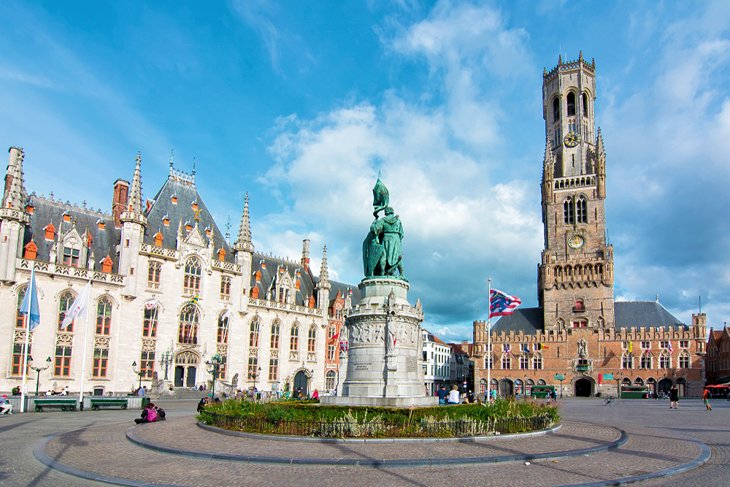
The Halle, which is Bruges' most recognizable feature, stands out on the south side of Markt, the city's central plaza.
The Halle was founded in 1248 and twice enlarged, first in the 14th century and then again in the 16th century, and originally functioned as the city's principal market place. The structure is surrounded by a lovely courtyard, and the city fathers once addressed the crowd gathered below from the balcony above the entrance.
One of Belgium's finest bell towers, the 83-meter-high belfry is accessible from the Halle's interior courtyard. The bell tower was first built in 1282, and the upper, octagonal section was lastly finished in 1482. 47 bells make up the carillon that still hangs in the tower today. You can ascend the tower's 366 steps for the best vantage point of Bruges.
On the second story, which is accessible through an elevator, is the historic Treasure Room, which houses official records behind wrought-iron grills.
2. Go to the Holy Blood Basilica
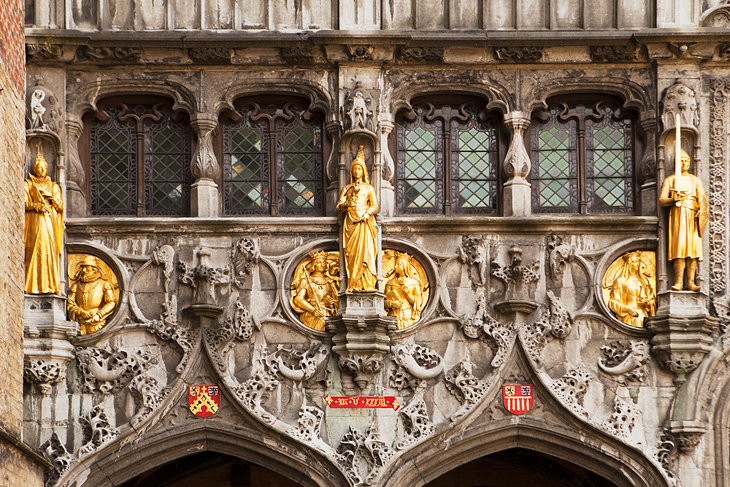
The Holy Blood Basilica (Heilig-Bloedbasiliek) dominates the Burg or Burg Square, the city's main square.
Dietrich of Alsace is credited with bringing a drop of Christ's blood back from the Holy Land in 1149 when he returned from the Second Crusade, and the church is well known for the crystal vial maintained inside that is said to contain the drop of blood. This holy relic is paraded through the streets of Bruges every May as part of the March of the Holy Blood.
Between 1529 and 1534, the basilica's facade was built, including three arches in the Flamboyant style and gilded statues. The basilica itself is made up of a late Gothic top chapel and a Romanesque lower chapel that house the remains of St. Basil that Robert II, Count of Flanders, brought from Palestine.
The upper chapel, which was built in 1480, is reached by a beautiful spiral staircase. It is here that the vial containing the Holy Blood is brought out each Friday and displayed to the faithful.
3. Explore the Markt
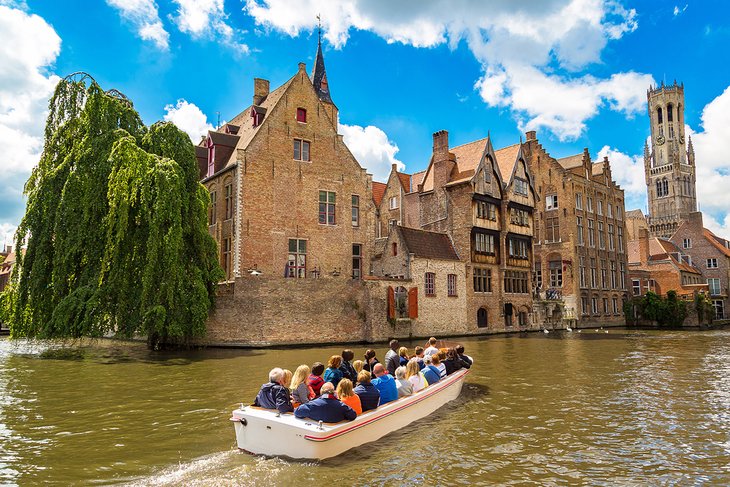
The Markt, Bruges' lively central square, is located in the very center of the city and is flanked on all sides by beautiful structures from various historical eras.
The Neo-Gothic Provinciaal Hof building, which was constructed in 1887 and houses the West-Vlaanderen provincial government, dominates the area on the eastern side. The magnificent brick Huis Bouchoute from the fifteenth century is located in the left-hand corner on the western side.
https://utravelo.com/en/christmas-market-2022
On the other corner is the Craenenburg, where the citizens of Bruges imprisoned the future Habsburg Emperor Maximilian for 11 weeks in 1488 at the behest of Ghent. Only after consenting to obey the Regency Council's orders and command the departure of all foreign forces was he granted freedom.
The best way to appreciate all of this architectural beauty is to join the crowds of tourists and residents at one of the Markt's numerous cafés and sit for a while taking it all in.
4. Take a Canal Cruise

The best thing to do in Bruges is join one of the tourist cruise boats for the most leisurely sightseeing experience. Between the Beginjhof (Beguinage) and Jan van Eyck Square, the boat trip route passes directly through the center of Bruges, providing excellent views of the canal-side architecture along the way.
Between March and mid-November, boat cruises are offered every half-hour from 10 am to 6 pm every day. If you're traveling in the dead of winter, check with your hotel in Bruges because the timetable can alter according on the weather, but you can anticipate significantly fewer journeys. Although the boats are open to the elements, when it rains, passengers are given umbrellas.
You don't need to select between the five distinct boat excursion providers because they all operate out of five different jetties in the heart of the city and all offer the same itinerary, boat type, and ticket price.
There is no need to make reservations in advance; simply show up at the jetty to purchase your ticket. Be aware that the boat tours are quite well-liked during the height of summer. Plan to catch the first boat of the day to avoid the crowds of day visitors.
5. Visit the Town Hall.
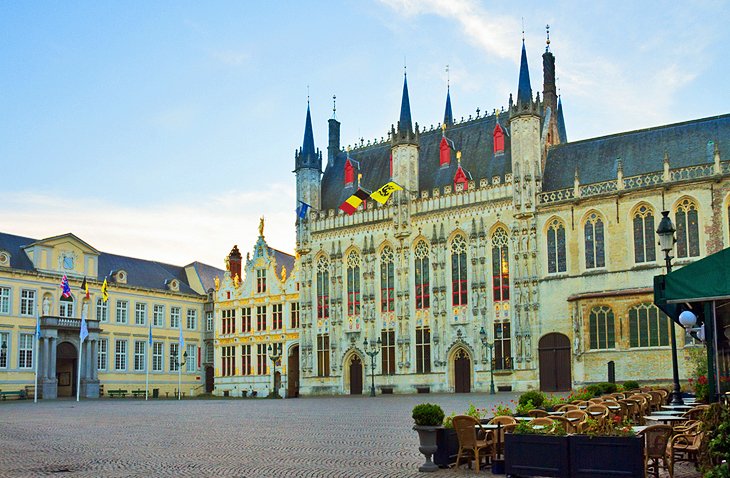
The Bruges Town Hall (Stadhuis), one of the oldest in Belgium, is located on the southeast side of the Burg. It was built between 1376 and 1420.
The exquisite Gothic structure's exterior exhibits the strong vertical emphasis typical of the design, with soaring pilasters, three of which finish in octagonal turrets, and towering Gothic arched windows separating them. The 49 niches are filled with statues of the counts of Flanders starting with Baldwin Iron Arm.
Don't miss the first floor's grand Gothic Hall with its gorgeous timber vaulting, which dates to 1402, and its murals by A and J de Vriendt depicting significant events in the town's history (1895-1900).
6. Check out the Bruges Liberty
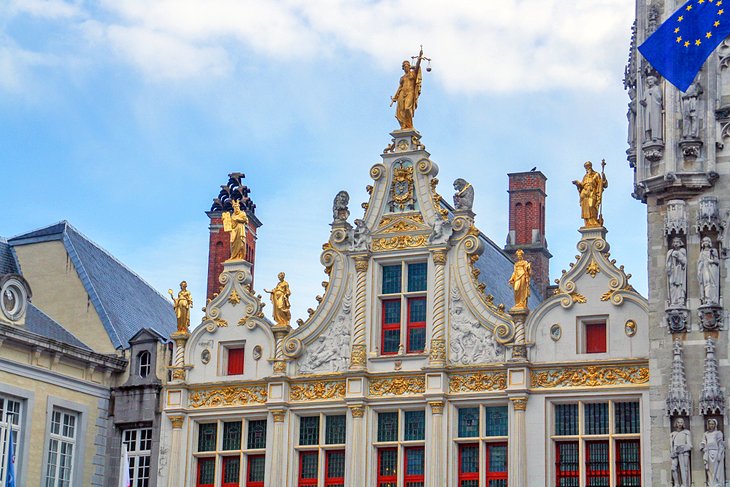
The Bruges Tourism Office is located in part of what was the Law Courts, located on the east side of Burg Square and constructed between 1722 and 1727 on the site of the old Liberty of Bruges (Paleis van het Brugse Vrije), when independent magistrates had jurisdiction over the area.
The charming 16th-century facade that faces the canal in the back is one of the older building's remnants that has remained.
Visitors can now see the Brugse Vrije Museum inside one or two of the more old chambers.
The Schepenzaal (lay judges' court), where you can view the renowned chimneypiece conceived by Lanceloot Blondeel in 1529 and created by Guyot de Beaugrant in black marble and oak, is of great interest. This outstanding example of Renaissance artistry features carved oak figurines of Emperor Charles V and his parents, Ferdinand and Isabella of Castille, Mary of Burgundy, and Maximilian, as well as an alabaster frieze representing the tale of Susanna and the Elders.
7. Visit the Groeninge Museum to view the artwork
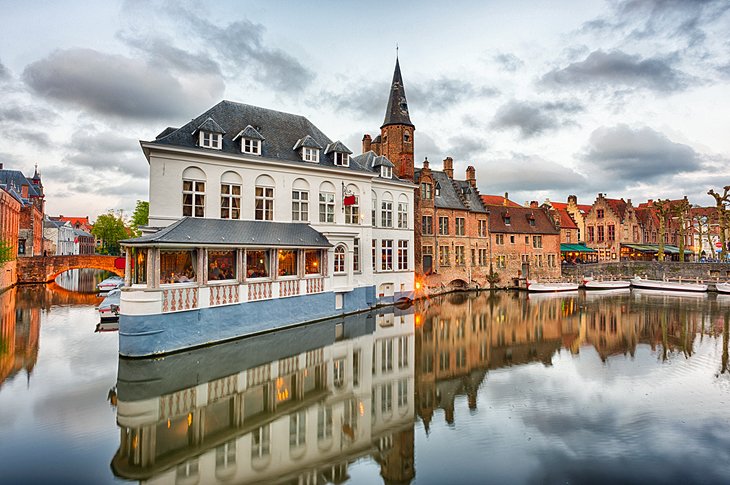
The Groeninge Museum (Stedelijk Museum voor Schone Kunst), which houses Bruges' best collection of art, is located near the Dijver Canal.
The museum has a wonderful collection of Old Flemish paintings in addition to a gallery of contemporary art and wonderful views of the ancient Bruges. Yet, the museum's first five rooms are likely to catch your eye because they are home to some truly great artwork created by Old Flemish masters.
Two significant pieces by Jan van Eyck are displayed in Room 1: the portrait of the artist's wife Margaret van Eyck, painted when she was 33 years old, and Madonna and the donor, Canon van der Paele (1436). (1439).
The Last Judgment by Hieronymus Bosch is one of the paintings in Room 5, and panels depicting the St. Ursula legend and a portrait of Luis Gruuthuse, both well-known pieces by undiscovered Bruges painters, are located in Room 3.
8. Take pictures of the renowned St. Boniface Bridge
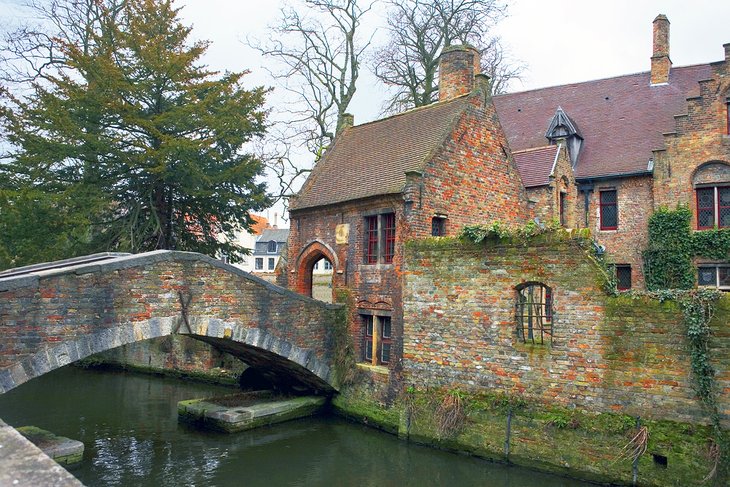
St. Boniface Bridge (Bonifaciusbrug), a small brick pedestrian bridge that spans the canal directly in front of the Cathedral of Our Lady and the Groeninge Museum, is one of the most well-known photo locations in Bruges.
Its location along the canal affords bridge-crossers some of the city's most serene canal views, as well as fantastic opportunities to capture images of the Church of Our Lady, despite the bridge's little size and youth (it was built in the early 20th century).
There can be a little line for photos here at the height of the summer. Being here first thing in the morning, when far fewer people are there, is the best approach to prevent it.
9. Appreciate Our Lady's Church
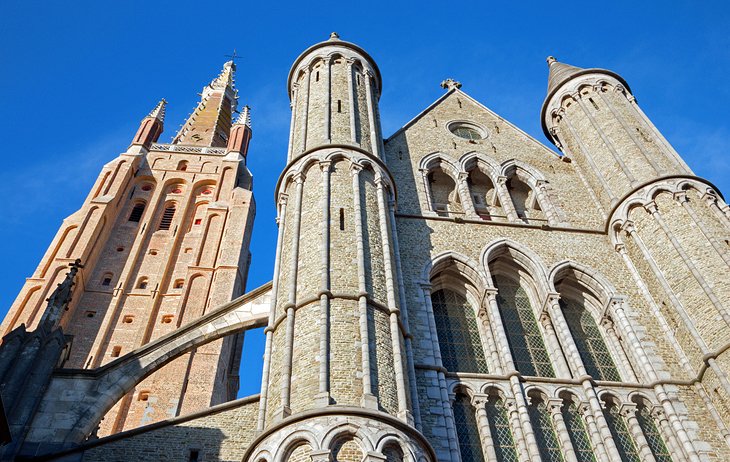
The tallest structure in Belgium is the Onze Lieve Vrouwekerk's (Our Lady's Church) 112-meter-high spire. In 1230, work on the nave and aisles began. The outer aisles and chapels weren't finished until the 14th and 15th centuries.
Did you know that, for the first time since 2016, the historic cycling classic Ronde Van Vlaanderen (Tour of Flanders) will start in Bruges again this year? 🚴 With plenty of extra activities on 1 and 2 April, Bruges will 'make' the Tour! 😀
— Visit Bruges (@Visit_Bruges) March 15, 2023
More info: https://t.co/sa9Mr6JMLX pic.twitter.com/Ox5qJ8dzcI
The church is home to several priceless works of art, including the magnificent Mother and Child sculpture by Michelangelo (1503-04). In the southern end of the chapel, the sculpture is located on the altar.
Bernaert van Orley painted the Crucifixion on the high altar, Pieter Pourbus painted the triptych Adoration of the Shepherds, and Gerard David painted the Transfiguration of Christ.
10. Tour the Old Saint John's Hospital (Sint-Jansspitaal)
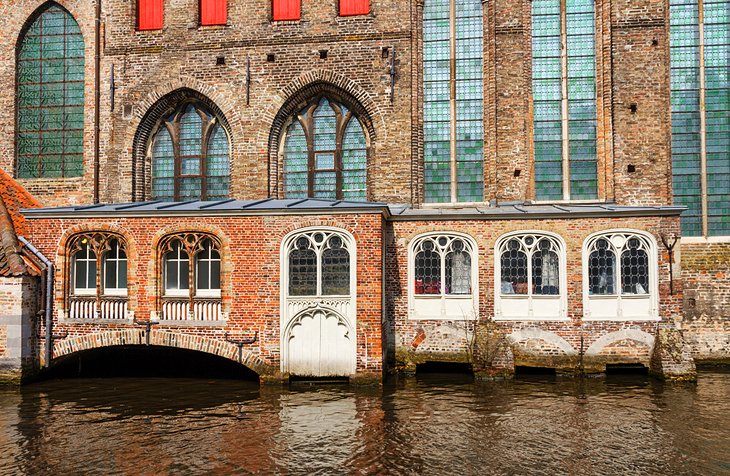
The Sint-Jansspitaal (St. John's Hospital), constructed in the 12th century, is the oldest structure in Bruges and is situated directly across from the west door of the Cathedral of Our Lady. A relief depicting the Mary and the date 1270 decorate the tympanum above the bricked-up gate to the left of the Mariastraat entry.
In what were formerly the wards of the historic structure, a historical exhibit of documents and medical equipment is on display. Also preserved is the historic dispensary that was situated next to the wards.
The Memling Museum, a small collection of Hans Memling's works, is also located inside the old hospital's walls (ca. 1430-94).
The Reliquary of St. Ursala (1489), regarded as one of the master's most significant works, stands out among these. The Mystic Marriage of St. Catherine, which was painted for the so-called St. John altar, is only somewhat less well-known.
The street of Walstraat, which is located south of Sint-Jansspitaal, is bordered by little, incredibly charming, gabled 16th- and 17th-century cottages in which lacemakers still carry out their trade.
11. Tour the Béguinage and the Minnewater Area.
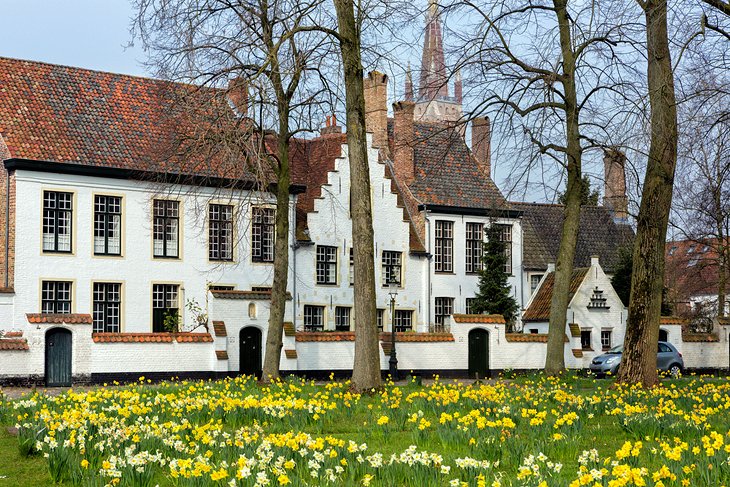
Bruges' bustling outer harbor once included Minnewater (also known as the "Lake of Love"), which is located on the opposite side of Wijngaardplein. Today, the only remnant of its turbulent past is the Gothic Lock House (sluishuis) at the northern end.
The Béguinage in Bruges (Prinselijk Begijnhof ten Wijngaerde), with its white 17th-century homes arranged around a grassy, tree-shaded court, may be seen from the Lock House with a wonderful view.
Margaret of Constantinople founded it in 1245, and currently Benedictine nuns live there.
One of the original béguine cottages has been transformed into the Begijnhof Museum, which provides a fascinating look at life in the béguinage, between the entrance gate and church (established 1245, restored 1605).
12. Explore the Dijver Mansions' Museums
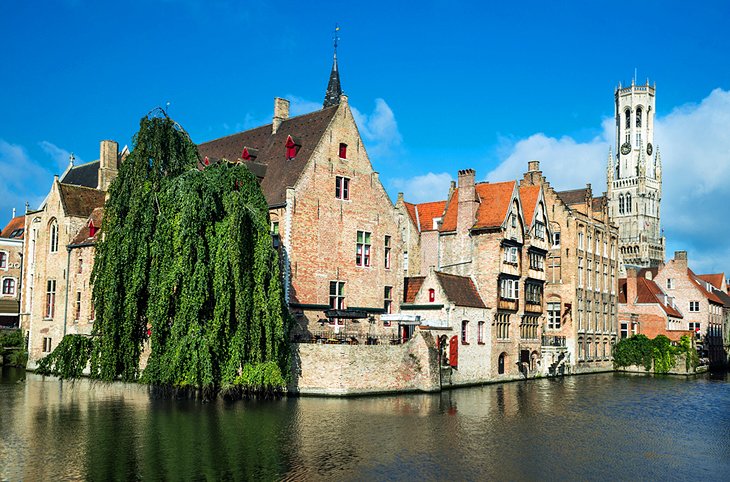
The Heren van Gruuthuse home, which is now a charming collection of 15th-century structures, was previously located at the far end of the Dijver Canal on the left. The exiled English monarch Edward IV sought refuge here in 1471. The first "heren" were businessmen who controlled the dried herb market (gruut).
The remarkable Gruuthuse Museum, which houses a superb collection of antiques and applied art in 22 rooms, is now housed in a portion of the mansion.
The lacework, sculptures, tapestries, and weaponry, as well as the charmingly restored and entirely true old Flemish kitchen and the dispensary, are especially striking.
In the 18th-century Arentshuis next to the Gruuthusemuseum, the Brangwyn Museum houses porcelains, pewter ware, ceramics, mother-of-pearl ware, and a charming collection of views of old Bruges in addition to a display of paintings and drawings by the English artist Frank Brangwyn, who was born in Bruges (1867-1956).
13. Visit Sint-Salvatorskathedraal.
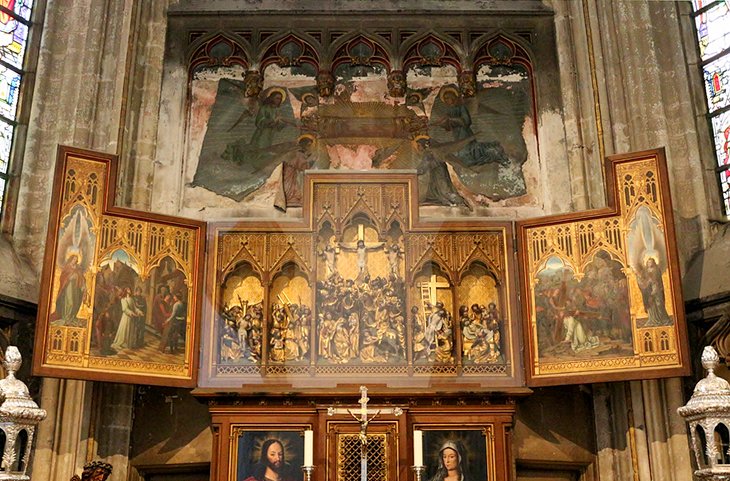
Take the short Heilige Geeststraat street from the Church of Our Lady to the Sint-Salvatorskathedraal, the city's first parish church and a cathedral since 1834. Most of the current building's components come from the 12th and 13th centuries, however it was initially constructed in the tenth century.
The lower Romanesque component of the 99-meter-high west tower, which resembles a fortification, was built between 1116 and 1227, while the brick portion was built between 1183 and 1228.
The cathedral has endured the iconoclastic rage over the years as well as four fires.
The interior of the 101-meter-long structure has some interesting furniture. The Baroque rood-screen by Artus Quellin the Younger, the 15th-century choir stalls decorated with the coats of arms of the Knights of the Golden Fleece, and the 1731 Brussels tapestries hanging above the stalls are all particularly noteworthy.
The cathedral museum, which lies immediately outside the right transept, is home to numerous priceless works of art.
Take the Steenstraat, which has a row of classic Bruges gable gildehuizen that have earned it a reputation as one of the city's loveliest streets, to reach to Bruges' Markt from here.
14. Take in Sint-interior Jacobskerk's beauty
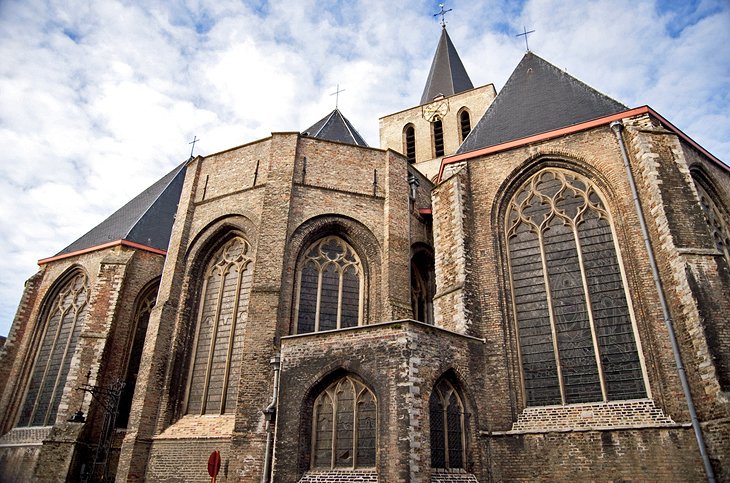
Sint-Jacobstraat, which extends from the northwest corner of the Markt past the Eiermarkt to the Gothic Sint-Jacobskerk, passes the 18th-century Musical Academy on the left and the Boterhuis (a cultural center) on the right when traveling in this direction.
The church, which dates from the 13th to the 15th century, was enlarged through gifts from the dukes of Burgundy, whose residence lay nearby.
A variety of excellent paintings by regional painters from the 16th to 18th centuries can be found inside the lavishly decorated interior, along with some intriguing tombs. The twin-tiered tomb of Ferry de Gros is one of the latter and is located to the right of the choir (a treasurer of the Order of the Golden Fleece who died in 1544).
15. Check out the Jeruzalemkerk Stained Glass Window
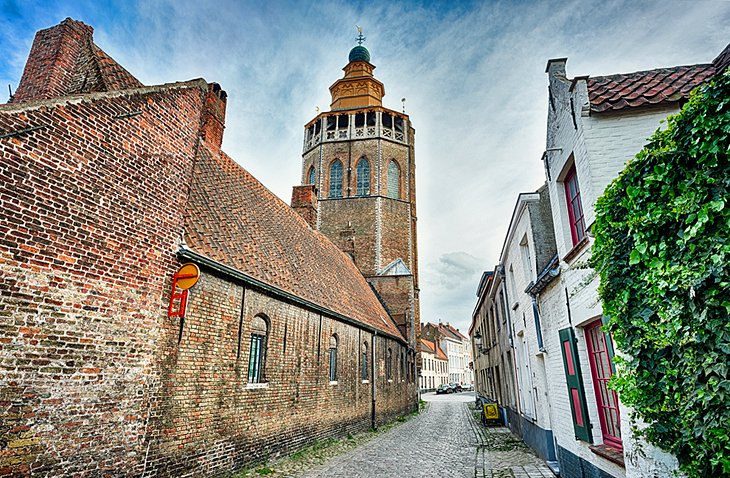
The Church of the Holy Sepulchre in Jerusalem served as the inspiration for the 1428 construction of Jeruzalemkerk, a Late Gothic church.
The church was constructed by the Adorne family after they returned from a visit to the Holy Land.
Visitors should take note of the church's exceptionally beautiful 15th and 16th century stained-glass window art and make sure they visit the facsimile of Christ's tomb (the Holy Sepulchre) while they are there.
The Jeruzalemkerk's tower is what is most notable about its appearance. Its oriental inspirations set it apart from other church spires in Belgium.
16. Wander to the Windmills Along the Canal

Walking from the city's center to the windmills in Kruisvest Park, which follows the route of the city's former eastern ramparts, is one of the city's most pleasant strolls.
Although windmills have been present on the rampart summits since the 13th century, they are significantly more recent than the windmills that still stand today on the lawn-covered rampart summits.
You may observe this process at Sint-Janshuismolen (Sin-Janshuis Windmill) from late spring to early fall. The four windmills in this area are still used to grind grain. For close-up views of the windmills and stunning panoramas of the grassy ramparts region, you can ascend the grassy hummock stairs at each one of them.
17. Daytrip to Flanders
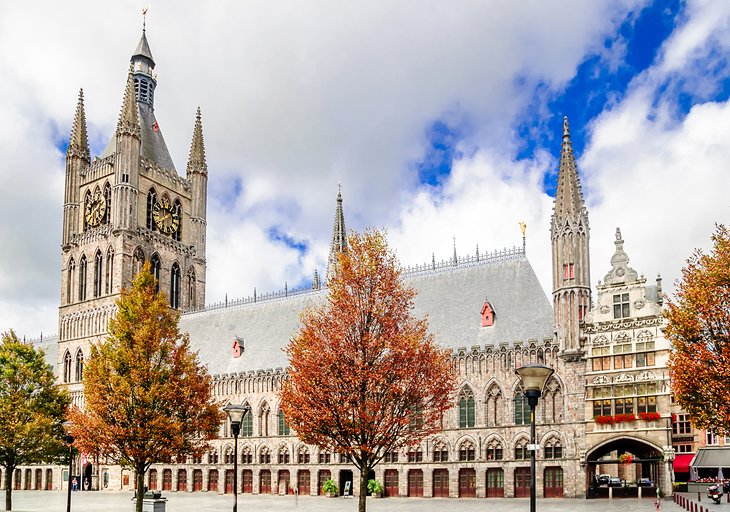
Anyone interested in military history who are staying in Bruges can easily make a day excursion to the memorials and battlefields in Flanders.
The majority of the region's most significant World War I attractions, including the Menin Gate and Rijselpoort (also known as Lilletor), several military cemeteries and monuments, as well as the vast battlefields, are located in the town of Ypres, which is only a short drive away.
Ypres also features a number of wonderful churches and a charming ancient plaza called Groke Markt with the Lakenhalle (cloth hall), which houses the significant In Flanders Fields Museum and dates back to the 13th century.
A full-day tour of the World War I battlefields in Flanders can be taken by visitors without their own vehicles from Bruges. Transport is provided, a light lunch is provided, and a knowledgeable guide who can explain significant historical locations and landmarks is included in the tour.
The Tyne Cot Cemetery, Menin Gate, In Flanders Fields Museum, and German Military Cemetery are a few of the tour's sites.

